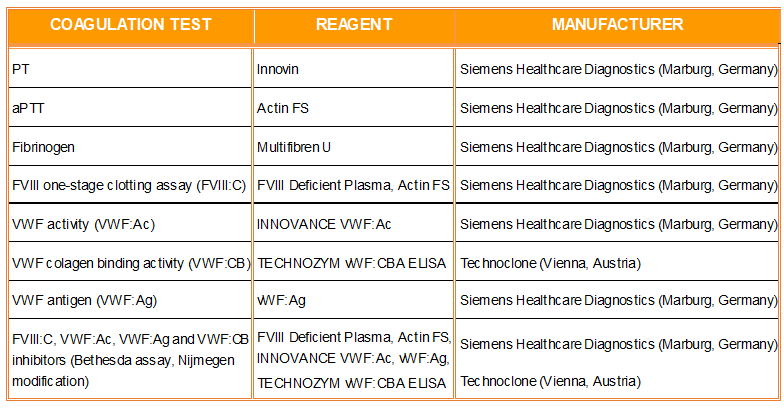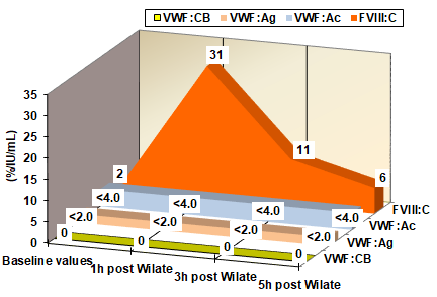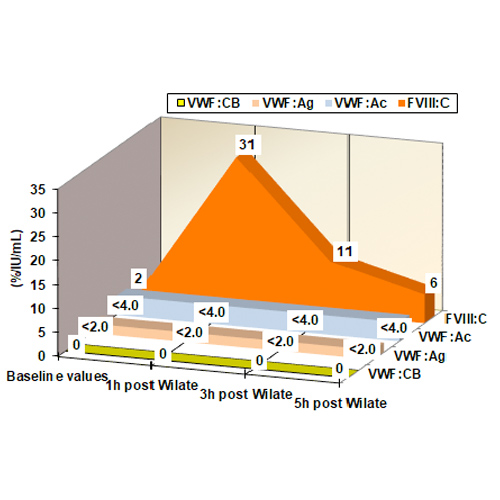Désirée Coen Herak1, Marija Milos1, Silva Zupancic-Salek2, Renata Zadro1,3
1Department of Laboratory Diagnostics, University Hospital Centre Zagreb, Zagreb, Croatia; 2Department of Medicine, University Hospital Centre Zagreb, Zagreb, Croatia; 3University of Zagreb, Faculty of Pharmacy and Biochemistry, Zagreb, Croatia.
BACKGROUND/AIMS:
The development of an inhibitor against von Willebrand factor (VWF) is a rare but serious treatment complication of von Willebrand disease (VWD). It has been reported that some VWF antibodies additionally inhibit factor VIII coagulation activity (FVIII:C). Hereby, we report the case of the presence of inhibitors against VWF and FVIII identified during the preoperative laboratory workup in a 50-year-old man with previously diagnosed VWD.
PATIENT HISTORY:
A 50-year-old man with VWD diagnosed at age of 35 years and no family history of bleeding disorders, was reffered to our laboratory for the preoperative workup before the planned surgical procedure of total knee endoprosthesis implantation, due to right knee arthrosis. Previously, at age of 35 he experienced severe bleeding before the septoplasty surgery and received a total of 30 doses of cryoprecipitate. In the following 15 years he had no severe bleeding episodes except prolonged bleeding after tooth extraction when he was treated with Wilate (Octapharma, Switzerland) and tranexamic acid.
MATERIALS AND METHODS:

Table 1. Coagulation tests performed
RESULTS:

Table 2. Coagulation test results obtained during the preoperative workup and in the next three-month period post Wilate administration.

Figure 1. Baseline coagulation test results before Wilate administration and 1, 3 and 5 hours after administration of 50 IU/kg Wilate.
CONCLUSIONS:
The presented rare case of inhibitor against VWF and FVIII:C, detected after extensive laboratory examination during the preoperative workup, prevented serious perioperative and postoperative bleeding and enabled the opportunity to find out the most appropriate treatment option for this patient.
